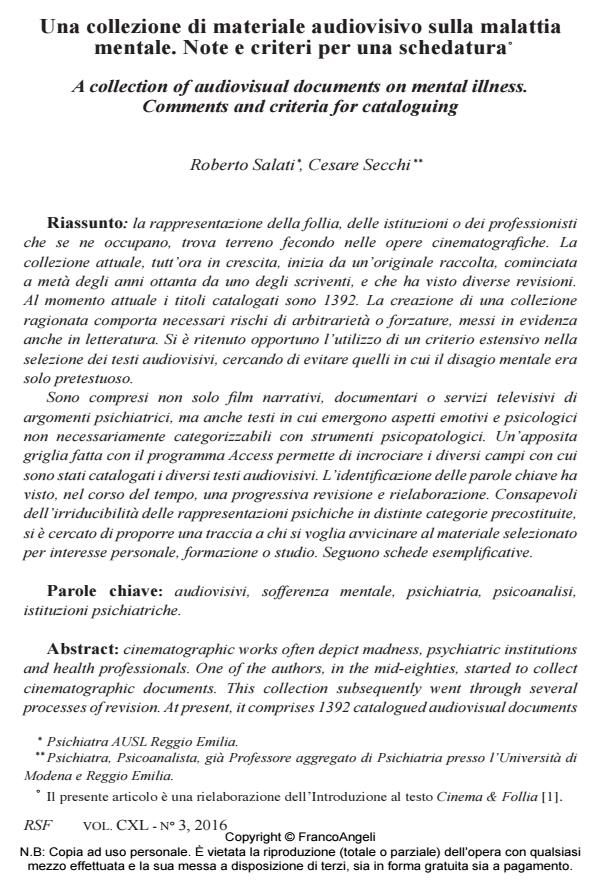A collection of audiovisual documents on mental illness. Comments and criteria for cataloguing
Journal title RIVISTA SPERIMENTALE DI FRENIATRIA
Author/s Roberto Salati, Cesare Secchi
Publishing Year 2016 Issue 2016/3
Language Italian Pages 28 P. 111-138 File size 751 KB
DOI 10.3280/RSF2016-003009
DOI is like a bar code for intellectual property: to have more infomation
click here
Below, you can see the article first page
If you want to buy this article in PDF format, you can do it, following the instructions to buy download credits

FrancoAngeli is member of Publishers International Linking Association, Inc (PILA), a not-for-profit association which run the CrossRef service enabling links to and from online scholarly content.
Cinematographic works often depict madness, psychiatric institutions and health professionals. One of the authors, in the mid-eighties, started to collect cinematographic documents. This collection subsequently went through several processes of revision. At present, it comprises 1392 catalogued audiovisual documents and continues to increase in number. To assemble an annotated collection entails a risk of arbitrary or enforced choices, as literature underlines. The audiovisual documents of the present collection were selected using a wide-ranging criterion that does not however include documents in which mental distress is only a pretext. The collection consists of narrative and documentary films, television reports, that concentrate on psychiatric topics, but also take account of emotional and psychological, not necessarily psychopathological, episodes. A specific grid - utilizing the computer application Access - was built to catalogue the audiovisual documents, making use of a cross-sectional data approach. The choice of keywords went through various stages of revision and reprocessing. The authors - fully aware of the difficulty of putting representations of psychic distress in predefined categories - propose a research system that facilitates the detection of documents, be it to respond to personal interests, or to training and research needs. Finally, the authors present some example of datasheets.
Keywords: Audiovisual, mental distress, psychiatry, psychoanalysis, psychiatric institutions
Roberto Salati, Cesare Secchi, Una collezione di materiale audiovisivo sulla malattia mentale. Note e criteri per una schedatura in "RIVISTA SPERIMENTALE DI FRENIATRIA" 3/2016, pp 111-138, DOI: 10.3280/RSF2016-003009